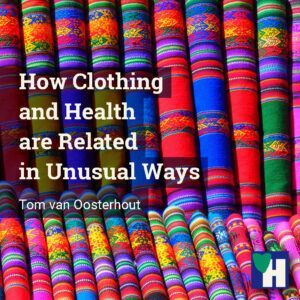
The opening sentence of the book Clothing and Health: An Elementary Textbook of Home Making, is: “Our clothes are important for they help to keep us well. … Sewing is an art that all girls should learn. If we know how to sew, we can keep our clothes in order and always be neat and attractive in appearance.”
The book was published in 1920 and exclusively targets girls. In 1920 in the US, women spent over a billion dollars a year on textile materials alone.
To be neat and attractive, are not the only arguments the book introduces to explain why women should know how to sew their own clothes. Arguments that still carry some weight from our perspective: to know how to sew would make women aware of the costs of clothes, and the durability, and whether the clothes are comfortable. Perhaps it’s good to add that this also applies to men.
Some of the links are affiliate links. As an affiliate associate, we earn a commission when you purchase any of the products offered through the shared links at no extra cost for you. This helps us maintain this website.
Table of contents
The origins of clothes
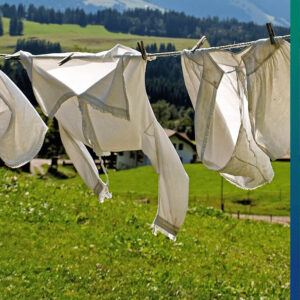
In the Twenties of the last century, women were introduced to the origins of clothes. Women learned from which plants the raw materials were made and how these materials were manipulated into yarns, and how the yarns were woven into textile from which finally the clothes were made.
I am totally unaware whether today in schools girls and boys learn those things. If not, that would be a pity. To say the least. Because, since 1920, there are many new developments that are of interest when it comes to clothes.
Most of the 80 billion clothing items produced annually are made of synthetic fibers. Clothes that are made of natural raw materials undergo treatments with hazardous chemicals. Healthy and environmentally friendly clothes are hard to come by.
Moreover, marketing and advertising efforts push people into a fashion cycle, which is almost impossible to breach. Why not alluring people to buy sustainable clothes and encourage them to be frugal and careful with their clothes? Well, the answer is simple, there is no profit in healthy and eco-friendly clothes.
Detox My Fashion
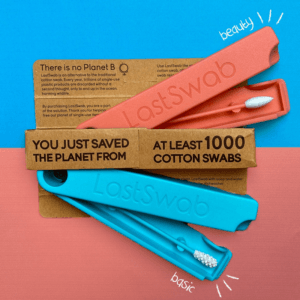
In 2011 Greenpeace started the Detox My Fashion campaign. Since then 80 clothes companies (representing 15% of the total worldwide market volume) committed themselves to this campaign.
The campaign is still running and aims at increased transparency, and the elimination of hazardous chemicals throughout the supply chain (zero toxic discharges). Greenpeace fueled the campaign in 2019 by proving that these aims are feasible.
Given that every year 80 billion clothing items are produced, this means that still some 68 billion clothing items are produced with hazardous chemicals. Besides supporting Greenpeace’s campaign, we could also stop buying so many clothes, and only buy clothes that can guarantee that they comply with the principles of sustainability.
Homemade
At present, it seems hardly feasible to produce your own clothes. Or even to repair clothes. Why and where did we lose the ability and the time to do this? Probably several developments coincided.
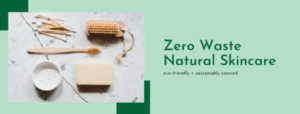
The first and dominant development was the separation of the production of the raw materials, and the production of the final clothing items. Economic growth was the second development, including better-improved labor conditions, which made it possible for more people to buy more clothes. With devastating environmental consequences.
Cheap synthetic clothes, and this is the third argument, enabled almost everybody to buy the clothes they wanted. Which was vigorously promoted by the fourth development: the Frantic Fashion Fritter. This is probably best demonstrated in Monty Python’s movie The Life of Brian, when the crowd standing beneath Brian’s window, worshipping him, shouts: “We’re all individuals.”
Are we? No, of course not. We’re just members of the herd. When we look around and discover what the fashion industry sells us, there is not much left of our individuality. We all desperately try to be part of the same herd. And of course, for every herd, the grass is greener in the next meadow and the next year. We must reverse this downward spiral.
Buy clothes that are eco friendly
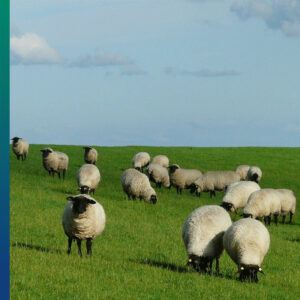
There are other, and very toxic, ways in which clothing and health are related. Conventional cotton uses lots of pesticides: 25% of the amount applied worldwide. Most of these pesticides are under suspicion of causing cancer.
Cotton is also grown with enormous quantities of synthetic fertilizers. Pesticides and synthetic fertilizers make cotton one of the most significant environmental polluters.
Moreover, for the fabrication of cotton into clothes, many toxic materials are used, such as heavy metals, flame retardants, ammonia, phthalates, and formaldehyde, just to name a few.
The raw materials for polyester and nylon clothes come from crude oil. The processing of crude oil increases global warming and releases toxic chemicals into the air. Besides, polyester and nylon clothes are non-biodegradable, causing severe pollution.
Organic cotton, linen, and wool are excellent alternatives compared to their conventional versions. Take for instance organic wool. Extra care is taken to pasture and animal management. No pesticides are applied. Not to the soil, not to the feedstuff, and not to the sheep. No synthetic hormones are allowed, and only organic types of medication. Moreover, the production of organic yarn from organic wool is also limited to environmentally safe products.

Wear clothes that are healthy
Besides, do we know what the clothes we wear do with our personal physical health? There is hardly any research that gives you insight into the health benefits or dangers of the clothes you wear. Yet, here are some rules of thumb:

- Wear clothes that decrease the chances of infections;
- Wear loose clothes, these are clothes that do not pinch off nerves, arteries, or even your skin;
- Wear Fair Trade and organic clothes;
- Wear locally sourced clothing, with known eco-safe practices;
- Wear clothes of small producers, who use transparent environmentally friendly practices;
- Buy less new and more second-hand;
- More in general: value the clothes you wear and wear them with care.
Clothing and health

For every decision we make, it is wisest to inform ourselves first. This means that we all have to go back 100 years and learn from the Girls’ Sewing League of Pleasant Valley. Not because we all have to learn to sew again, although that is sound advice.
We have to learn again where the raw materials for our clothes come from, how the clothes are made, and what the environmental impact of the production of clothes is.
From the environmental, ecological, and health points of view, it is safest to buy only Fair Trade or organic clothes. Be aware that such clothes are not only made of cotton. Linen made of flask, bamboo, and wool are also textiles that we can buy organic. The Internet is a very rich source, so we all must be able to find a shop in our neighborhood.
Please, share with us why, how, and where you buy your organic clothes, or might even produce and repair your own clothes?
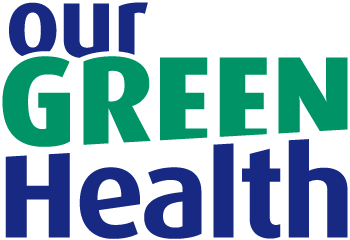
I didn’t realize that about 68 billion of the 80 billion clothing items are produced with hazardous chemicals. This figure is really shocking.
I am pleased that ten years ago Greenpeace launched the Detox My Fashion campaign, that it is still active, and that there is interest on the part of clothing companies to collaborate. Given that this campaign has been going on since 2011, I wonder if the data on the amount of clothing produced with hazardous chemicals is more recent? I hope it is a bit outdated and that the current statistics are friendlier.
Thanks for this sobering article and for raising awareness.
I wish you all the best
Nina
Hi Nina,
Thank you for your comment on my article How clothing and Health are related in unusual ways. Always appreciated.
The numbers, 68 to 80 billion items of clothing, are very recent: 2018. And from Greenpeace. They updated their campaign and gave this as the latest numbers. Besides, it is not certain that the 12 billion clothing items, from the companies with which Greenpeace made a deal, are completely free of toxic chemicals.
On the other hand, it is also possible that an unknown part of the 68 billion clothing items, which fall outside the agreement with Greenpeace, is produced without using toxic chemicals. Personally, I think that this is a very small part. My guess is that the current statistics are not much friendlier.
The issue with the toxic chemicals is that they settle in the fibers of the clothes. It is totally unknown how much of these chemicals penetrate the human body, either through the skin or by breathing, and whether this is a threat to our health. However, I think the risk is comparable with the risk of using artificial fragrances: https://ourgreenhealth.com/the-risk-of-using-artificial-fragrances/
For now, stay safe, stay healthy.
Regards,
Tom
Wow! You and Hannie sure get me thinking which is awesome by the way.
As you know we do try to live sustainably and be mindful of our impact on the environment. Unfortunately, clothing is something I hadn’t thought of. Thank you for waking me up.
I learned to sew while in school and have put that skill to use many times over the years. I don’t recall learning about the origins of fabrics though.
Raising five kids we often shopped thrift stores to clothes extra life.
I also enjoy knitting and crocheting and all of my family benefits from those hobbies. I do buy much of my wool from a local Alpaca farm so that is good, I think.
after reading this article I will now have to do some serious research on where I can source the rest of our clothing to ensure it is also sourced sustainably and humanely.
Any recommendations?
Hi Deborah,
It took us many years to wake up to the truth of unsustainable practices. And being aware is only the first phase in our personal development to counter these unsustainable practices.
Clothing has for long also been only at the border of our consciousness. I remember that a long time ago I once talked with a woman who controlled a European citizen initiative to support cotton farmers in India to go organic. Not until I wrote this article, I made the link with my personal wardrobe.
You share your textile skills with Hannie. Although being an independent entrepreneur, does not provide her with many opportunities to perform those skills.
When you want to analyze the sustainability of your behavior, there are three criteria: does it serve the planets’ wellbeing (air, water, nature, climate, biodiversity), does it serve the people (as well as a collective, as individually – labor conditions and decent pay are 2 important issues), and does it add value (not only economically, but for instance also culturally, politically).
To test whether you’re on the right track, just do what you do now: read what others write, discuss with others, and express your ideas and feelings.
To answer your question: I don’t know where you can buy sustainable clothes. This entirely depends on your local circumstances. Yesterday we bought a nightgown for Hannie at a large well-known clothes chain. The nightgown was labeled organic. The price was higher, compared to similar nightgowns. We also know that this clothes chain is part of Greenpeace’s Detox My Fashion campaign.
As far as I know, there are no officially designated labels referring to the sustainability of clothes. Although I think it would be very easy to use the same EU-label as with organic food.
Thank you for your comment, and compliment. Stay safe, stay healthy.
Regards,
Tom
This an interesting read. I am particularly interested about the use of eco-friendly clothes. While this is plausible, there are however limitations to this as a consumer. One choice of clothing is tied to quite a number of factors such as affordability, taste, climate, and so on. Don’t you the consideration of how the clothes got to the market might be an extra burden for the consumer to bear.?
Thanks for this post. I found it quite informative and unique
Hi Solomon,
When we consider our span of control to be limited to what we do today and do not bother ourselves with future problems, indeed, we do not have to worry about what we buy, and how it’s made and distributed. There are however serious issues with this attitude.
We cannot continue to pollute the air and the water and the soil, and we cannot continue to destroy rainforests and biodiversity, without jeopardizing our own existence. The problem is of course that the air, water, soil, rainforests, and biodiversity need advocates to defend their concerns.
However, the only advocates they have, are humans. Personally, I don’t trust humans very much when it comes to their advocacy of these concerns. At the same time, when it comes to this, we’re at the mercy of humans, at the mercy of ourselves. What to do?
The only option left, is that we collectively try to counter these developments. This means that we together have to make a stand. We all have to change our tastes for fast and cheap. We have to cherish and invest in craftsmanship and sustainability.
The power of consumers is limitless. This is a problem, as well as an opportunity. Let’s focus on the opportunities.
Thank you for your comment and compliments.
Stay safe, stay healthy. Regards,
Tom
We did not know that making clothes could be so harmful to the environment and pollute the air with chemical waste. This has opened up our eyes to what the world will look like if we did not get this under control.
The eco-friendly clothes are much better and have less damage to the world and won’t affect the economy as badly.
What we heard today is going to stick with us forever and every time we see clothes in the clothes store and think wow we are killing our world with what we wear. Gave us something to think about, and a good one to think about.
Cheers,
Mathew&Deloris
Hi Mathew and Deloris,
Unfortunately, the production of clothes does not only contaminates the air with toxic fumes, the bigger problem is that clothes pollute water. During production, and during washing at home. What we also tend to forget, is the environmental impact of the production of all the toxic compounds, which are used to produce clothes.
I’m glad this article made you aware. However, I also hope that you will act upon your awareness. Being aware is important. To act is even more important. So the next time you need clothes, buy organic wool, cotton, or linen clothes, clothes with natural dyes, and strong clothes that will last longer.
Thank you for your comment. Stay safe, stay healthy.
Regards,
Tom
Hi Tom, I have written quite a few articles on this topic because I think we need to educate people by learning how toxic their clothing is.
Already many companies produce sustainable and beautiful fashion, and they are not that expensive anymore, especially if we try not to overconsume on products, we can easily afford sustainable fashion that stays with us for years. High-quality is more important!
I am very fond of buying second-hand clothing; they are of great quality and cheap.
Also, I have learned to sew dresses and skirts and made many items in my wardrobe myself. It is great because if you own some patterns, you can make your own style. And I love it.
Do you know Anne Burda? This woman has helped lots of women in her time, after world war 2nd, and nowadays to sew own clothes, by providing them with patterns. It is straightforward to use. Women don’t need to make their own patterns for sewing their clothes; it is all done. I have many Burdas at home.
Learning to sew is really great; I still repair my socks, which I have learned by observing my grandma. We can do many things to live sustainably, like buying furniture in secondhand shops and painting them.
We got a free kitchen and completely adjusted the kitchen for our house, buying some devices, and we now have an old/new kitchen. We love that, just being creative.
Thank you again for a great article! 🙂
Hi Sylvia,
Of course, I know Burda. My mom and mother-in-law and Hannie used to read the Burda from front to back. They used the patterns a lot. My mom perhaps even for me. I can’t remember.
However, for me, these patterns always were a sophisticated type of geometry. Making my own clothes never crossed my mind. Although I can mend torn seams and sew on buttons. But knitting and crocheting, what Hannie did a lot, never was and probably never will be my thing.
It’s the same with carpentry. For a short period, I worked with a professor who used to build his own kitchen totally from the ground up. He was an excellent carpenter. Hannie is also a real craftswoman. I’ve two left hands if it comes to technical stuff.
In contrast, I’m a very good cook. Even much better than my mother or my mother-in-law. And I love poetry. This together somewhat compensates for my lack of other emancipation when it comes to making my own clothes.
Thank you again, for your comment and compliments. Stay safe, stay healthy.
Regards,
Tom